Bjorn Ottersten
Channel-Coded Precoding for Multi-User MISO Systems
Oct 30, 2024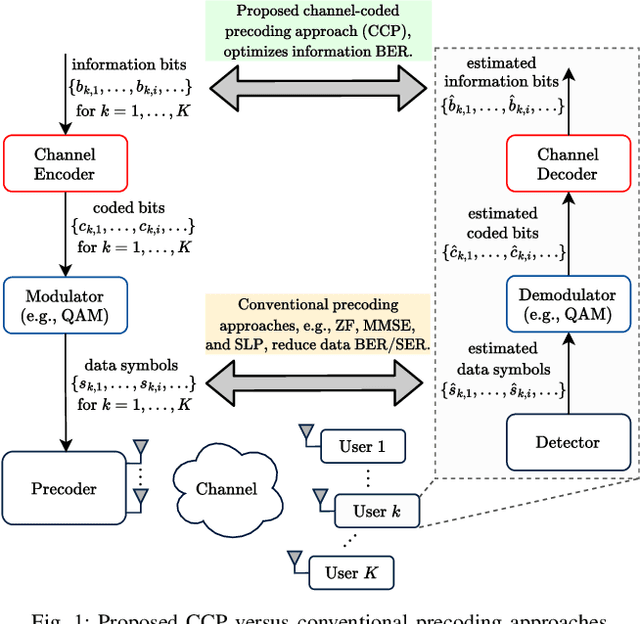
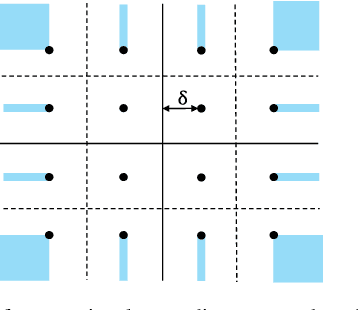
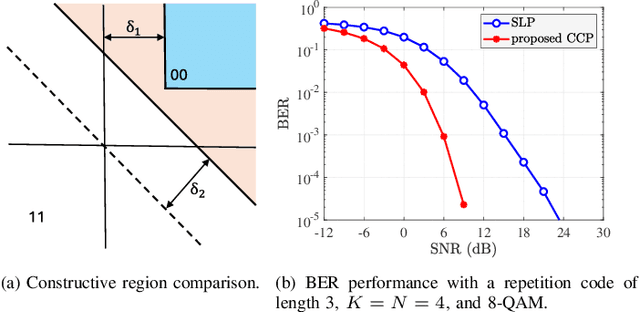
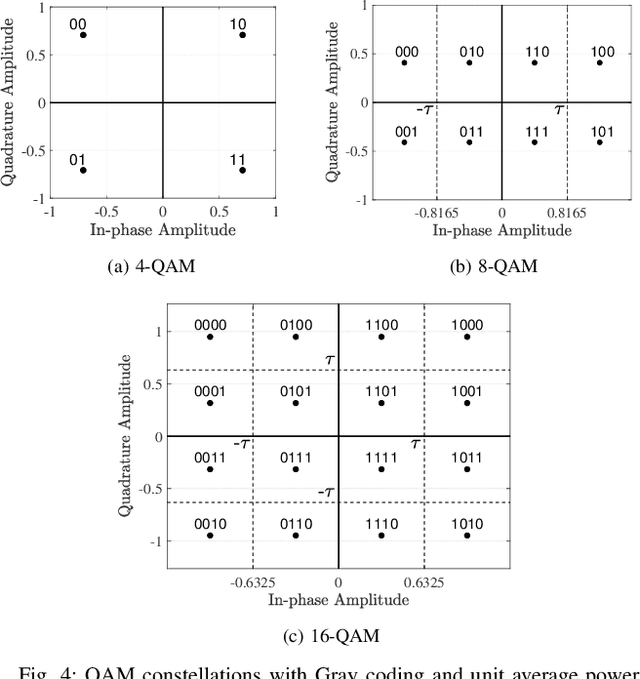
Abstract:Precoding is a critical and long-standing technique in multi-user communication systems. However, the majority of existing precoding methods do not consider channel coding in their designs. In this paper, we consider the precoding problem in multi-user multiple-input single-output (MISO) systems, incorporating channel coding into the design. By leveraging the error-correcting capability of channel codes we increase the degrees of freedom in the transmit signal design, thereby enhancing the overall system performance. We first propose a novel data-dependent precoding framework for coded MISO systems, referred to as channel-coded precoding (CCP), which maximizes the probability that information bits can be correctly recovered by the channel decoder. This proposed CCP framework allows the transmit signals to produce data symbol errors at the users' receivers, as long as the overall information BER performance can be improved. We develop the CCP framework for both one-bit and multi-bit error-correcting capacity and devise a projected gradient-based approach to solve the design problem. We also develop a robust CCP framework for the case where knowledge of perfect channel state information (CSI) is unavailable at the transmitter, taking into account the effect of both noise and channel estimation errors. Finally, we conduct numerous simulations to verify the effectiveness of the proposed CCP and its superiority compared to existing precoding methods, and we identify situations where the proposed CCP yields the most significant gains.
CoFAR Clutter Estimation using Covariance-Free Bayesian Learning
Aug 12, 2024Abstract:A cognitive fully adaptive radar (CoFAR) adapts its behavior on its own within a short period of time in response to changes in the target environment. For the CoFAR to function properly, it is critical to understand its operating environment through estimation of the clutter channel impulse response (CCIR). In general, CCIR is sparse but prior works either ignore it or estimate the CCIR by imposing sparsity as an explicit constraint in their optimization problem. In this paper, contrary to these studies, we develop covariance-free Bayesian learning (CoFBL) techniques for estimating sparse CCIR in a CoFAR system. In particular, we consider a multiple measurement vector scenario and estimate a simultaneously sparse (row sparse) CCIR matrix. Our CoFBL framework reduces the complexity of conventional sparse Bayesian learning through the use of the diagonal element estimation rule and conjugate gradient descent algorithm. We show that the framework is applicable to various forms of CCIR sparsity models: group, joint, and joint-cum-group. We evaluate our method through numerical experiments on a data set generated using RFView, a high-fidelity modeling and simulation tool. We derive Bayesian Cram\'{e}r-Rao bounds for the various considered scenarios to benchmark the performance of our algorithms. Our results demonstrate that the proposed CoFBL-based approaches perform better than the existing popular approaches such as multiple focal underdetermined system solver and simultaneous orthogonal matching pursuit.
User-Centric Beam Selection and Precoding Design for Coordinated Multiple-Satellite Systems
Mar 13, 2024Abstract:This paper introduces a joint optimization framework for user-centric beam selection and linear precoding (LP) design in a coordinated multiple-satellite (CoMSat) system, employing a Digital-Fourier-Transform-based (DFT) beamforming (BF) technique. Regarding serving users at their target SINRs and minimizing the total transmit power, the scheme aims to efficiently determine satellites for users to associate with and activate the best cluster of beams together with optimizing LP for every satellite-to-user transmission. These technical objectives are first framed as a complex mixed-integer programming (MIP) challenge. To tackle this, we reformulate it into a joint cluster association and LP design problem. Then, by theoretically analyzing the duality relationship between downlink and uplink transmissions, we develop an efficient iterative method to identify the optimal solution. Additionally, a simpler duality approach for rapid beam selection and LP design is presented for comparison purposes. Simulation results underscore the effectiveness of our proposed schemes across various settings.
Flexible Payload Configuration for Satellites using Machine Learning
Oct 18, 2023Abstract:Satellite communications, essential for modern connectivity, extend access to maritime, aeronautical, and remote areas where terrestrial networks are unfeasible. Current GEO systems distribute power and bandwidth uniformly across beams using multi-beam footprints with fractional frequency reuse. However, recent research reveals the limitations of this approach in heterogeneous traffic scenarios, leading to inefficiencies. To address this, this paper presents a machine learning (ML)-based approach to Radio Resource Management (RRM). We treat the RRM task as a regression ML problem, integrating RRM objectives and constraints into the loss function that the ML algorithm aims at minimizing. Moreover, we introduce a context-aware ML metric that evaluates the ML model's performance but also considers the impact of its resource allocation decisions on the overall performance of the communication system.
Task-Oriented Communication Design at Scale
May 15, 2023



Abstract:With countless promising applications in various domains such as IoT and industry 4.0, task-oriented communication design (TOCD) is getting accelerated attention from the research community. This paper presents a novel approach for designing scalable task-oriented quantization and communications in cooperative multi-agent systems (MAS). The proposed approach utilizes the TOCD framework and the value of information (VoI) concept to enable efficient communication of quantized observations among agents while maximizing the average return performance of the MAS, a parameter that quantifies the MAS's task effectiveness. The computational complexity of learning the VoI, however, grows exponentially with the number of agents. Thus, we propose a three-step framework: i) learning the VoI (using reinforcement learning (RL)) for a two-agent system, ii) designing the quantization policy for an $N$-agent MAS using the learned VoI for a range of bit-budgets and, (iii) learning the agents' control policies using RL while following the designed quantization policies in the earlier step. We observe that one can reduce the computational cost of obtaining the value of information by exploiting insights gained from studying a similar two-agent system - instead of the original $N$-agent system. We then quantize agents' observations such that their more valuable observations are communicated more precisely. Our analytical results show the applicability of the proposed framework under a wide range of problems. Numerical results show striking improvements in reducing the computational complexity of obtaining VoI needed for the TOCD in a MAS problem without compromising the average return performance of the MAS.
Grant-Free NOMA-OTFS Paradigm: Enabling Efficient Ubiquitous Access for LEO Satellite Internet-of-Things
Sep 25, 2022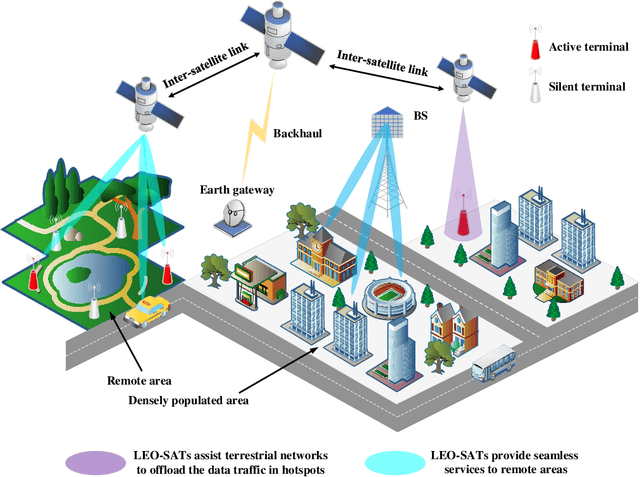
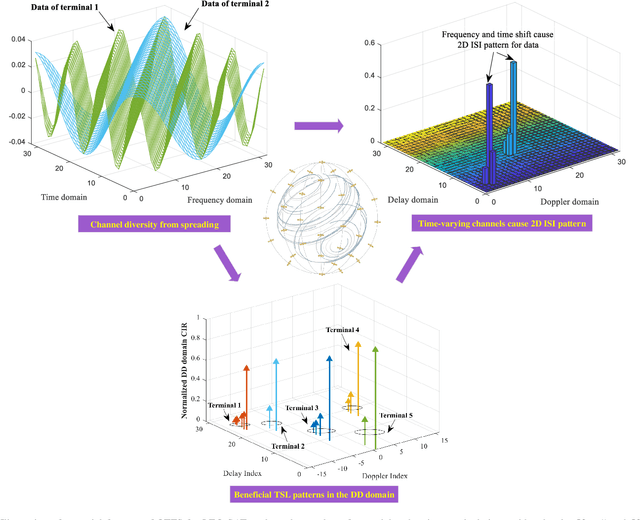
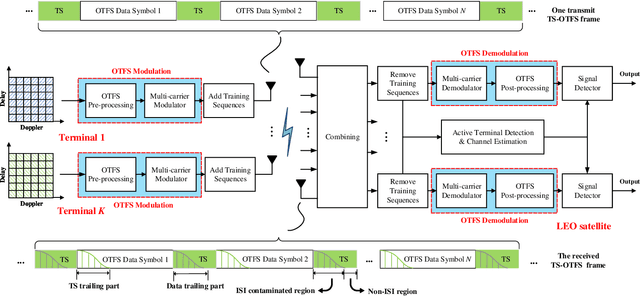

Abstract:With the blooming of Internet-of-Things (IoT), we are witnessing an explosion in the number of IoT terminals, triggering an unprecedented demand for ubiquitous wireless access globally. In this context, the emerging low-Earth-orbit satellites (LEO-SATs) have been regarded as a promising enabler to complement terrestrial wireless networks in providing ubiquitous connectivity and bridging the ever-growing digital divide in the expected next-generation wireless communications. Nevertheless, the stringent requirements posed by LEO-SATs have imposed significant challenges to the current multiple access schemes and led to an emerging paradigm shift in system design. In this article, we first provide a comprehensive overview of the state-of-the-art multiple access schemes and investigate their limitations in the context of LEO-SATs. To this end, we propose the amalgamation of the grant-free non-orthogonal multiple access (GF-NOMA) paradigm and the orthogonal time frequency space (OTFS) waveform, for simplifying the connection procedure with reduced access latency and enhanced Doppler-robustness. Critical open challenging issues and future directions are finally presented for further technical development.
Cooperative Hybrid Networks with Active Relays and RISs for B5G: Applications, Challenges, and Research Directions
Jun 23, 2022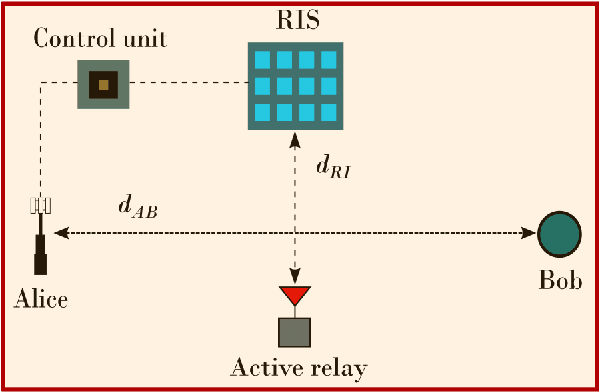
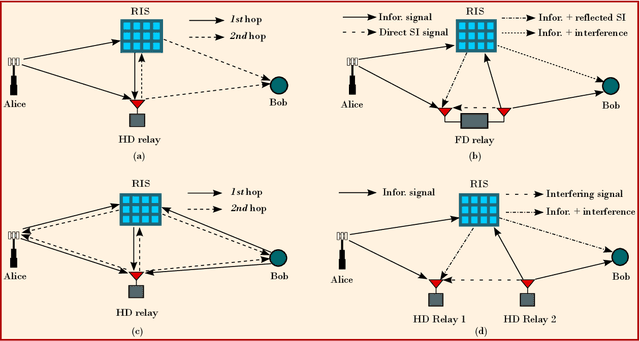
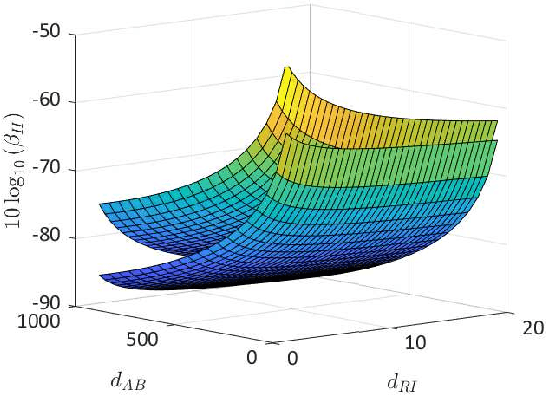
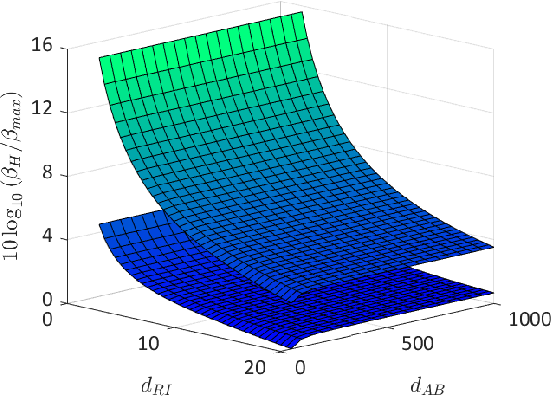
Abstract:Among the recent advances and innovations in wireless technologies, reconfigurable intelligent surfaces (RISs) have received much attention and are envisioned to be one of the enabling technologies for beyond 5G (B5G) networks. On the other hand, active (or classical) cooperative relays have played a key role in providing reliable and power-efficient communications in previous wireless generations. In this article, we focus on hybrid network architectures that amalgamate both active relays and RISs. The operation concept and protocols of each technology are first discussed. Subsequently, we present multiple use cases of cooperative hybrid networks where both active relays and RISs can coexist harmoniously for enhanced rate performance. Furthermore, a case study is provided which demonstrates the achievable rate performance of a communication network assisted by either an active relay, an RIS, or both, and with different relaying protocols. Finally, we provide the reader with the challenges and key research directions in this area.
Energy Efficiency Optimization for Backscatter Enhanced NOMA Cooperative V2X Communications under Imperfect CSI
Feb 16, 2022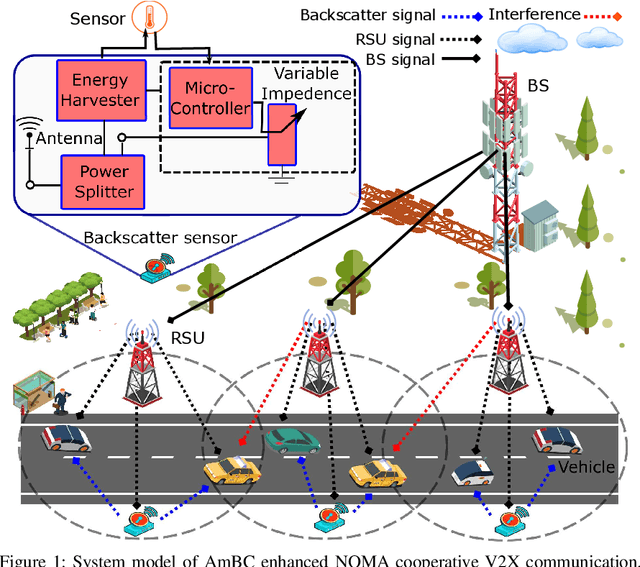
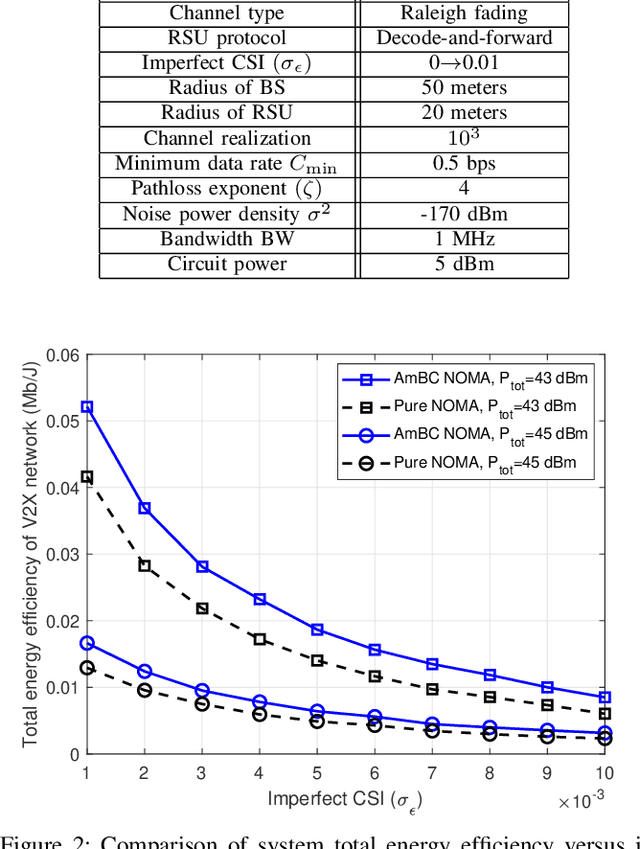
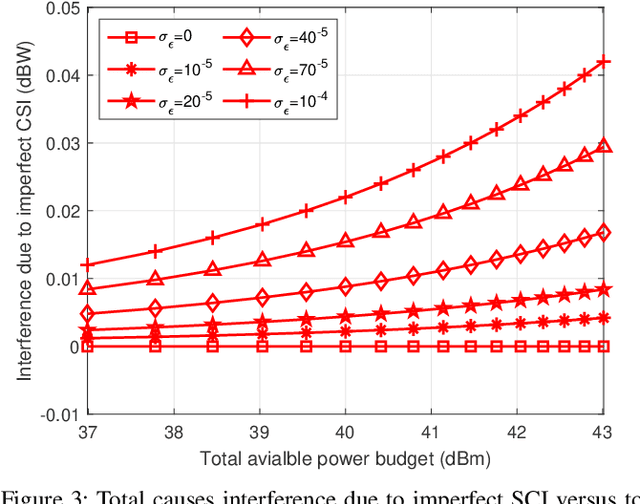
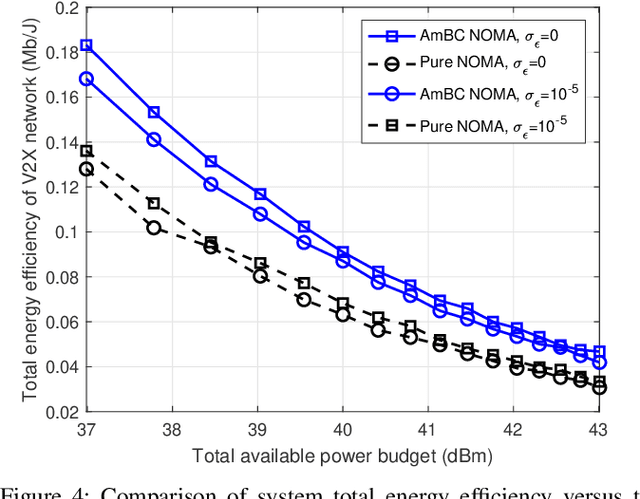
Abstract:Automotive-Industry 5.0 will use beyond fifth-generation (B5G) technologies to provide robust, computationally intelligent, and energy-efficient data sharing among various onboard sensors, vehicles, and other devices. Recently, ambient backscatter communications (AmBC) have gained significant interest in the research community for providing battery-free communications. AmBC can modulate useful data and reflect it towards near devices using the energy and frequency of existing RF signals. However, obtaining channel state information (CSI) for AmBC systems would be very challenging due to no pilot sequences and limited power. As one of the latest members of multiple access technology, non-orthogonal multiple access (NOMA) has emerged as a promising solution for connecting large-scale devices over the same spectral resources in B5G wireless networks. Under imperfect CSI, this paper provides a new optimization framework for energy-efficient transmission in AmBC enhanced NOMA cooperative vehicle-to-everything (V2X) networks. We simultaneously minimize the total transmit power of the V2X network by optimizing the power allocation at BS and reflection coefficient at backscatter sensors while guaranteeing the individual quality of services. The problem of total power minimization is formulated as non-convex optimization and coupled on multiple variables, making it complex and challenging. Therefore, we first decouple the original problem into two sub-problems and convert the nonlinear rate constraints into linear constraints. Then, we adopt the iterative sub-gradient method to obtain an efficient solution. For comparison, we also present a conventional NOMA cooperative V2X network without AmBC. Simulation results show the benefits of our proposed AmBC enhanced NOMA cooperative V2X network in terms of total achievable energy efficiency.
Backscatter-Aided NOMA V2X Communication under Channel Estimation Errors
Feb 03, 2022



Abstract:Backscatter communications (BC) has emerged as a promising technology for providing low-powered transmissions in nextG (i.e., beyond 5G) wireless networks. The fundamental idea of BC is the possibility of communications among wireless devices by using the existing ambient radio frequency signals. Non-orthogonal multiple access (NOMA) has recently attracted significant attention due to its high spectral efficiency and massive connectivity. This paper proposes a new optimization framework to minimize total transmit power of BC-NOMA cooperative vehicle-to-everything networks (V2XneT) while ensuring the quality of services. More specifically, the base station (BS) transmits a superimposed signal to its associated roadside units (RSUs) in the first time slot. Then the RSUs transmit the superimposed signal to their serving vehicles in the second time slot exploiting decode and forward protocol. A backscatter device (BD) in the coverage area of RSU also receives the superimposed signal and reflect it towards vehicles by modulating own information. Thus, the objective is to simultaneously optimize the transmit power of BS and RSUs along with reflection coefficient of BDs under perfect and imperfect channel state information. The problem of energy efficiency is formulated as non-convex and coupled on multiple optimization variables which makes it very complex and hard to solve. Therefore, we first transform and decouple the original problem into two sub-problems and then employ iterative sub-gradient method to obtain an efficient solution. Simulation results demonstrate that the proposed BC-NOMA V2XneT provides high energy efficiency than the conventional NOMA V2XneT without BC.
When RIS Meets GEO Satellite Communications: A New Optimization Framework in 6G
Feb 01, 2022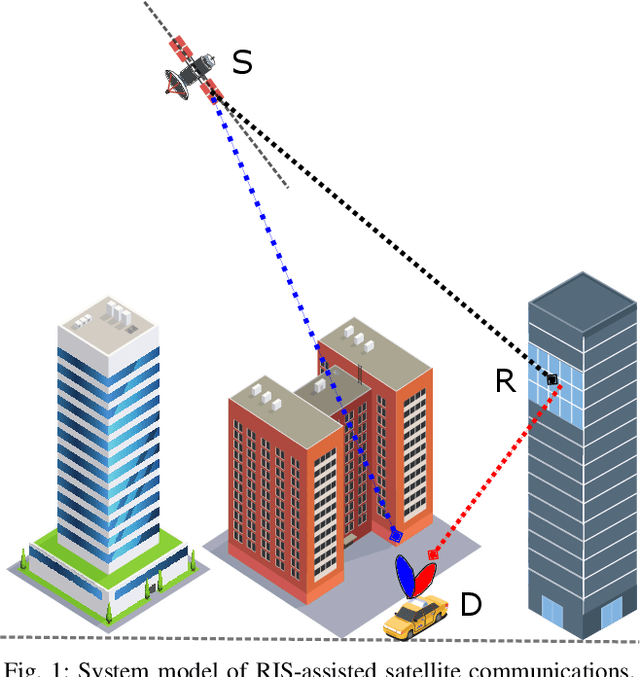
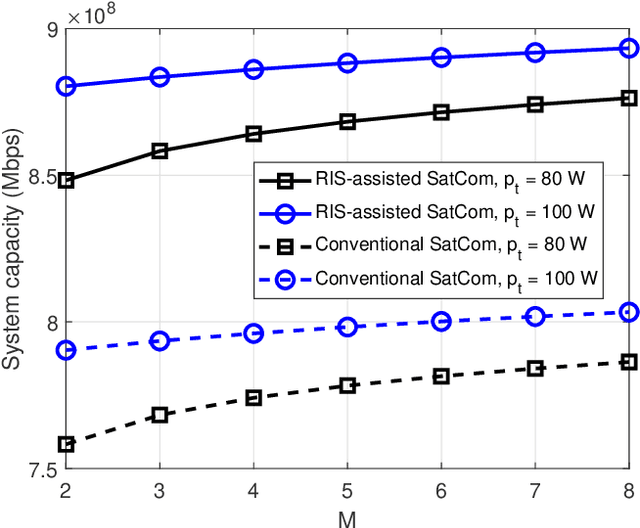
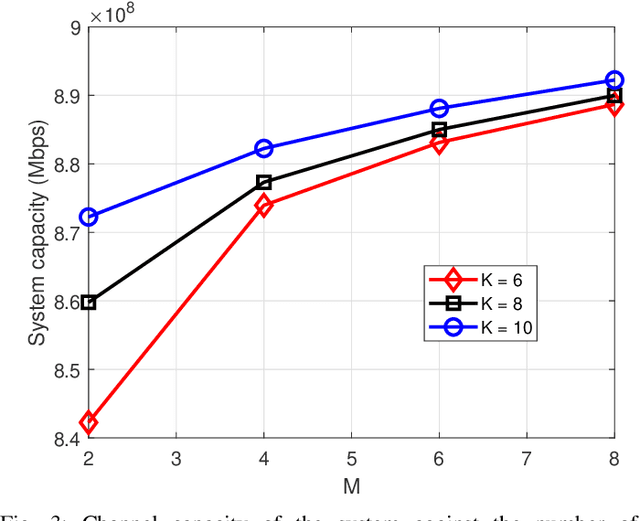
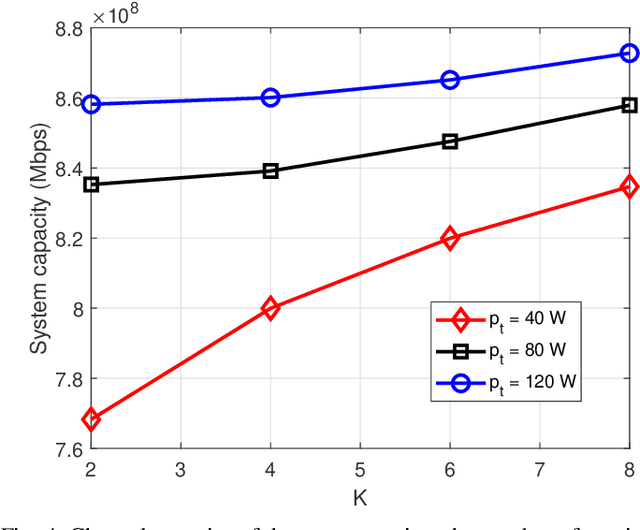
Abstract:Reflecting intelligent surfaces (RIS) is a low-cost and energy-efficient solution to achieve high spectral efficiency in sixth-generation (6G) networks. The basic idea of RIS is to smartly reconfigure the signal propagation by using passive reflecting elements. On the other side, the demand of high throughput geostationary (GEO) satellite communications (SatCom) is rapidly growing to deliver broadband services in inaccessible/insufficient covered areas of terrestrial networks. This paper proposes a GEO SatCom network, where a satellite transmits the signal to a ground mobile terminal using multicarrier communications. To enhance the effective gain, the signal delivery from satellite to the ground mobile terminal is also assisted by RIS which smartly shift the phase of the signal towards ground terminal. We consider that RIS is mounted on a high building and equipped with multiple re-configurable passive elements along with smart controller. We jointly optimize the power allocation and phase shift design to maximize the channel capacity of the system. The joint optimization problem is formulated as nonconvex due to coupled variables which is hard to solve through traditional convex optimization methods. Thus, we propose a new $\epsilon-$optimal algorithm which is based on Mesh Adaptive Direct Search to obtain an efficient solution. Simulation results unveil the benefits of RIS-assisted SatCom in terms of system channel capacity.
 Add to Chrome
Add to Chrome Add to Firefox
Add to Firefox Add to Edge
Add to Edge